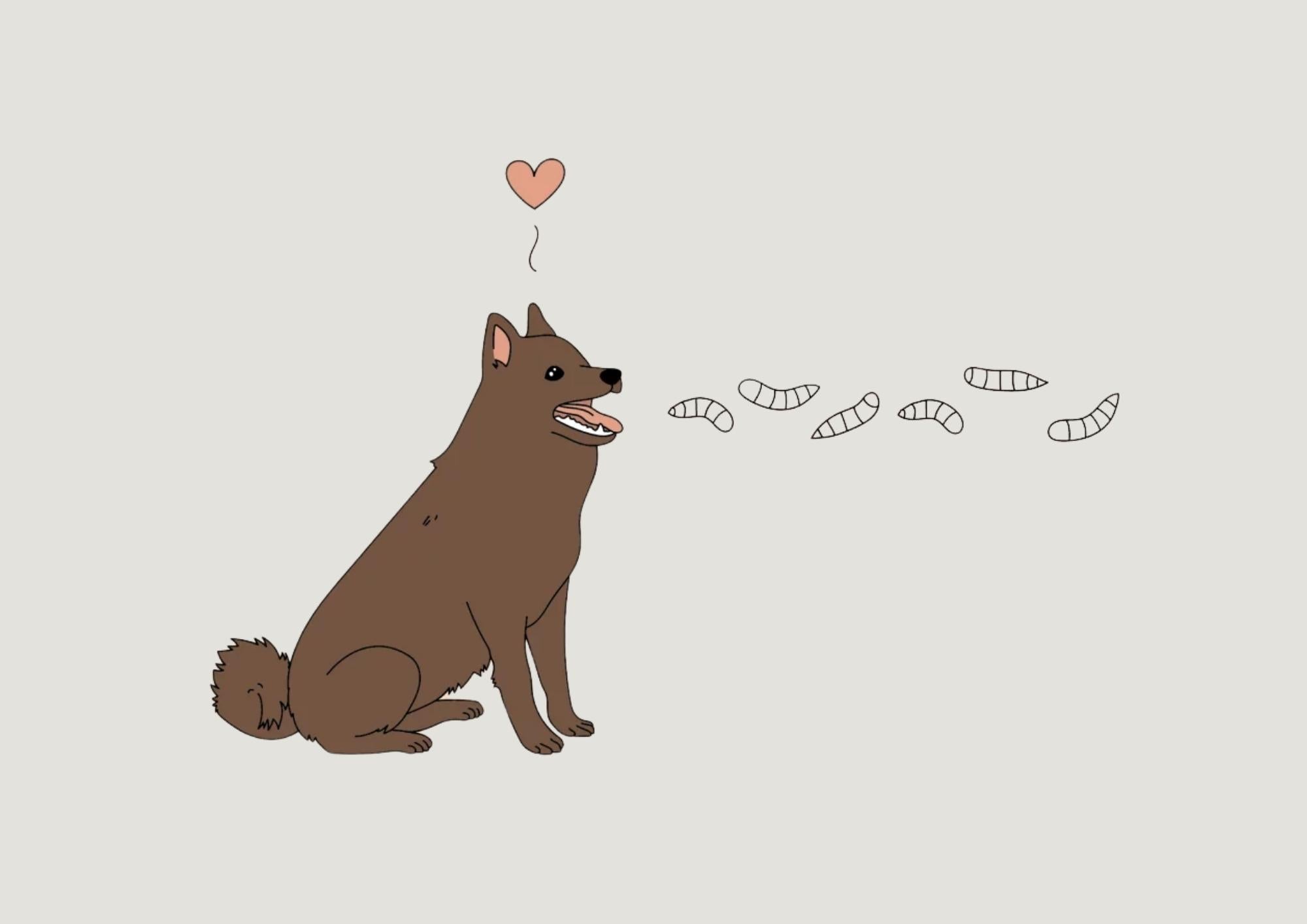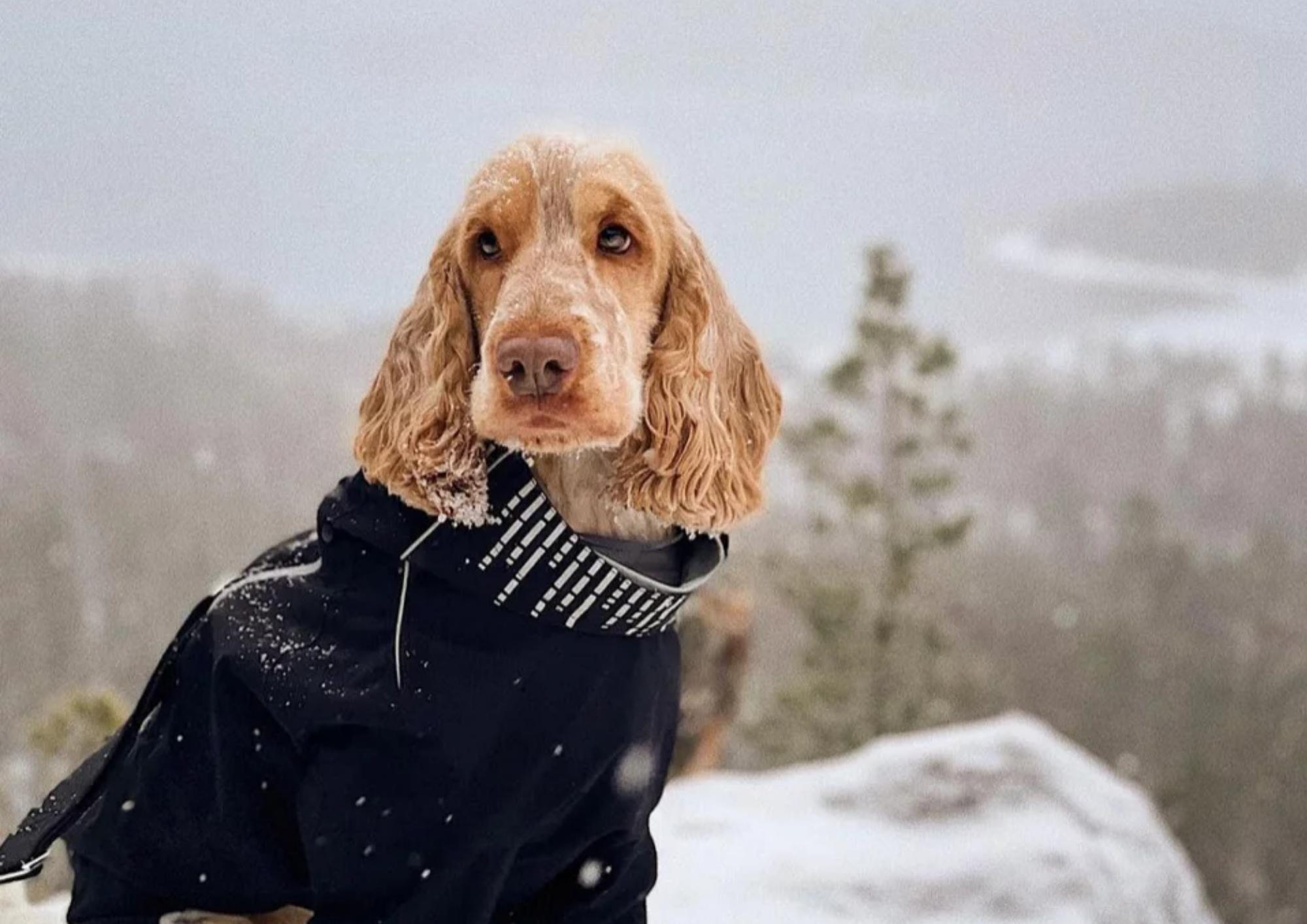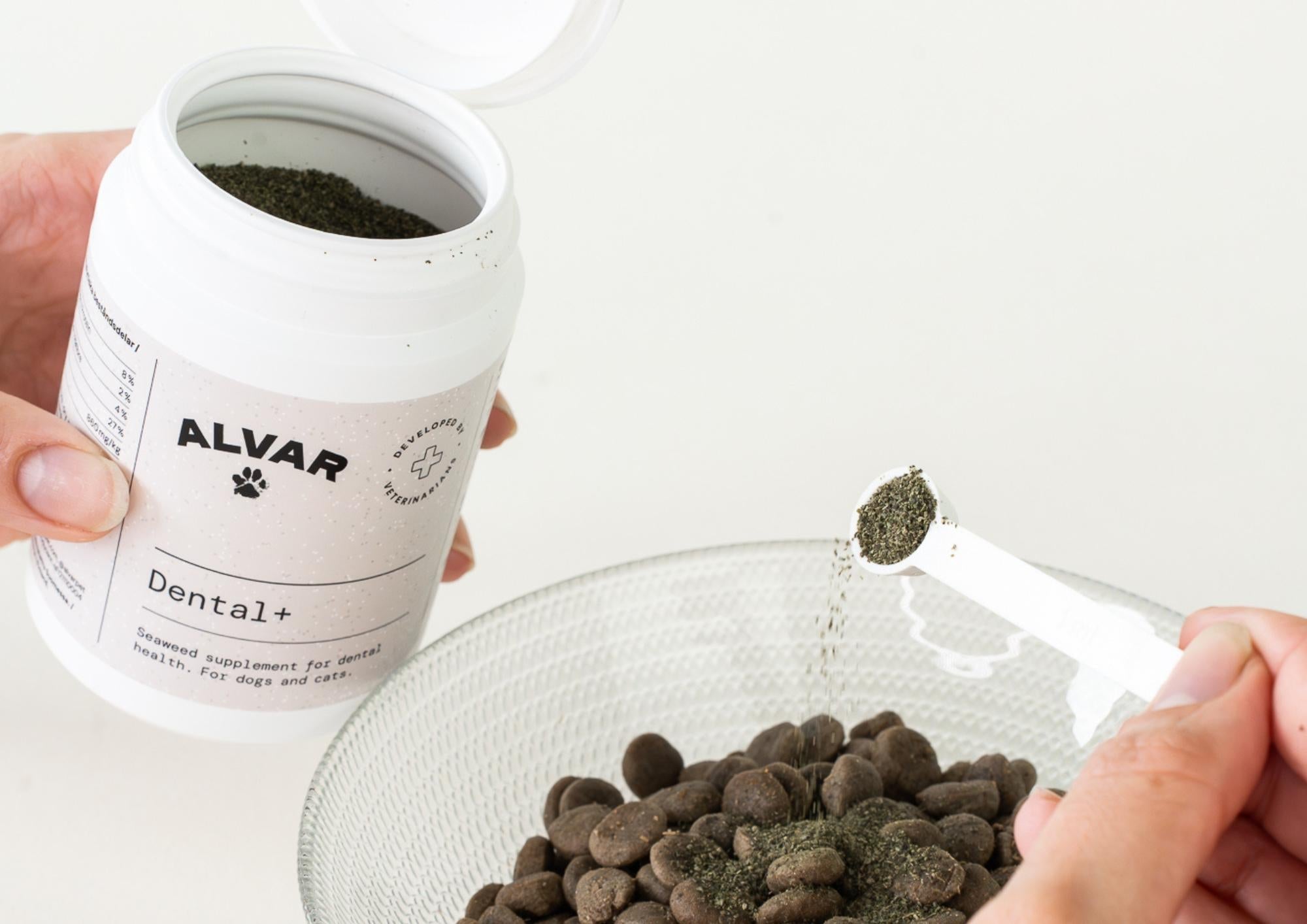Insects in the Dog's Bowl? An Overview of Using Black Soldier Fly Larvae in Dog Feeding.
The use of insects and, in particular, the protein derived from them in animal feeding has grown in interest in recent years. Insects are a nutritionally valuable raw material whose production burdens the environment significantly less than traditional protein sources.
A particularly interesting species in this regard is the black soldier fly, specifically its larvae, whose production requires very few resources. The nutritional value of protein derived from black soldier fly larvae in animal feeding is already well known.
Black Soldier Fly (Hermetia illucens)
The black soldier fly is a fly species originally from America, now found worldwide in tropical and warm regions. Adult black soldier flies are not pests. They live solely on water, do not approach humans, bite or sting, and do not spread diseases. Black soldier fly larvae grow on various types of feed, from food waste to other decomposing materials, and are considered the most efficient among all fly species in utilizing food. Black soldier fly larvae do not carry bacteria or spread diseases; on the contrary, they can inactivate pathogenic bacteria in their substrate.
From Fly to Larva: Excellent Nutritional Values
Black soldier fly larvae (BSFL) are a good source of protein and fat. Studies indicate that the larvae's protein content is naturally around 41%, and fat content around 29%. Typically, dried larvae protein powder used as a raw material can have a protein content exceeding 60%, and its amino acid composition closely matches the essential amino acid requirements of dogs. The digestibility of the protein powder is also good.
The fatty acid composition of the larvae depends somewhat on the feed used in their cultivation. Compared to other insects, black soldier fly larvae contain a high amount of medium-chain fatty acids, especially lauric acid (C12:0), known to have prebiotic effects, supporting gut bacteria, and antimicrobial properties. These antimicrobial properties have been observed in animals fed with black soldier fly larvae. Removing fat during protein powder production allows for adjusting the raw material's fat content as desired.
In addition to macronutrients, black soldier fly larvae also provide other essential nutrients, such as minerals and vitamins. An interesting research finding is the antioxidant properties associated with larvae protein, meaning the prevention of oxidative damage at the cellular level as a result of the body's immune response.
Larvae as Climate Change Mitigators
Regarding the significance of insects as an alternative protein source, the black soldier fly is considered the best option among all insect species for mitigating climate change.
Producing black soldier fly larvae requires only a fraction of the land area and water compared to traditional protein raw materials, and their remarkable ability to utilize various organic materials as feed makes them particularly valuable. Larvae can be cultivated using food production waste materials, making their cultivation an efficient recycling method.
The feed conversion efficiency of black soldier fly larvae is clearly higher than that of other insects raised for food, such as crickets and mealworms, as well as traditional livestock.
A Solution for Sensitive and Responsible Dogs
Black soldier fly larvae are an extremely interesting protein source to be utilized in dog food production. In addition to the aforementioned nutritional and environmental benefits, insect protein is generally well tolerated and may also be suitable for dogs suffering from food allergies.
Protein from black soldier flies can be made into delicious products for dogs.
In our selection you will find Derma/Insect dry food, which contains insect protein.
References:
- Wang YS, Shelomi M. 2017. Review of Black Soldier Fly (Hermetia illucens) as Animal Feed and Human Food. Foods. 2017 Oct 18;6(10):91.
- Nyakeri, EM, Ogola HJ, Ayieko MA, Amimo FA. 2017. An open system for farming black soldier fly larvae as a source of proteins for small-scale poultry and fish production. J. Insects Food Feed. 3, 51–56.
- Spranghers T, Ottoboni M, Klootwijk C, Ovyn, A, Deboosere S, De Meulenaer B, Michiels J, Eeckhout M, De Clercq P, De Smet S. 2017. Nutritional composition of black soldier fly (Hermetia illucens) prepupae reared on different organic waste substrates. J. Sci. Food Agric. 97, 2594–2600.
- Bosch G, Zhang S, Oonincx DG, Hendriks WH. 2014. Protein quality of insects as potential ingredients for dog and cat foods. J Nutr Sci. 2014;3:e29.
- Lei XJ, Kim TH, Park JH, Kim IH. 2019. Evaluation of supplementation of defatted black soldier fly (Hermetia illucens) larvae meal in beagle dogs. Ann Anim Sci 19:767–777
- Devi SM, Kim IH. 2014. Effect of medium chain fatty acids (mcfa) and probiotic (Enterococcus faecium) supplementation on the growth performance, digestibility and blood profiles in weanling pigs. Vet. Med. 59, 527–535.
- Skrivanova E, Marounek M, Benda V, Brezina, P. 2006. Susceptibility of Escherichia coli, Salmonella sp. And Clostridium perfringens to organic acids and monolaurin. Vet. Med. 51, 81–88.
- Spranghers T, Michiels J, Vrancx J, Ovyn A, Eeckhout M, De Clercq P, De Smet, S. 2018. Gut antimicrobial effects and nutritional value of black soldier fly (Hermetia illucens L.) prepupae for weaned piglets, Animal Feed Science and Technology, Volume 235, Pages 33-42.
- Mouithys-Mickalad A, Schmitt E, Dalim M, Franck T, Tome NM, van Spankeren M, Serteyn D, Paul A. 2020. Black Soldier Fly (Hermetia Illucens) Larvae Protein Derivatives: Potential to Promote Animal Health. Animals (Basel). 29;10(6):941.
- Nguyen TT, Tomberlin JK, Vanlaerhoven S. 2015. Ability of Black Soldier Fly (Diptera: Stratiomyidae)



